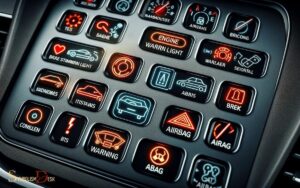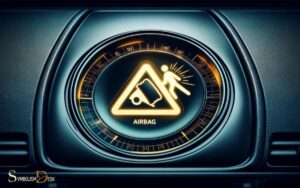Tire Pressure Symbol in Car: TPMS!
The tire pressure warning light in a vehicle is a critical dashboard symbol that alerts the driver to a potential issue with the tire pressure. This indicator is a component of the car’s Tire Pressure Monitoring System (TPMS), which monitors the air pressure inside the pneumatic tires.
When the tire pressure symbol lights up, it signifies that the pressure in one or more tires is either too high or too low, diverging from the manufacturer’s recommended psi (pounds per square inch) levels.
It’s imperative to check and adjust the tire pressure as soon as possible to ensure the vehicle’s safety, efficiency, and performance.
The TPMS is an automated system that notifies you when your tire pressure is not at the optimal level. This system helps to ensure that your vehicle’s tires are properly inflated, which can improve overall safety and fuel efficiency. In addition to monitoring tire pressure, some TPMS also include a low oil pressure indicator to alert you if the oil pressure in your vehicle drops below a safe level. This can help prevent damage to your engine and prolong the life of your vehicle.
Here’s what the tire pressure symbol typically means:
- Illuminated Symbol: Tire pressure is below or above the recommended level.
- Flashing Symbol: There is a malfunction with the TPMS.
Maintaining proper tire pressure is crucial for:
- Ensuring safety by reducing the risk of tire failure.
- Achieving better fuel economy by reducing rolling resistance.
- Improving vehicle handling and braking efficiency.
Regular tire pressure checks are vital for vehicle safety and optimal performance.
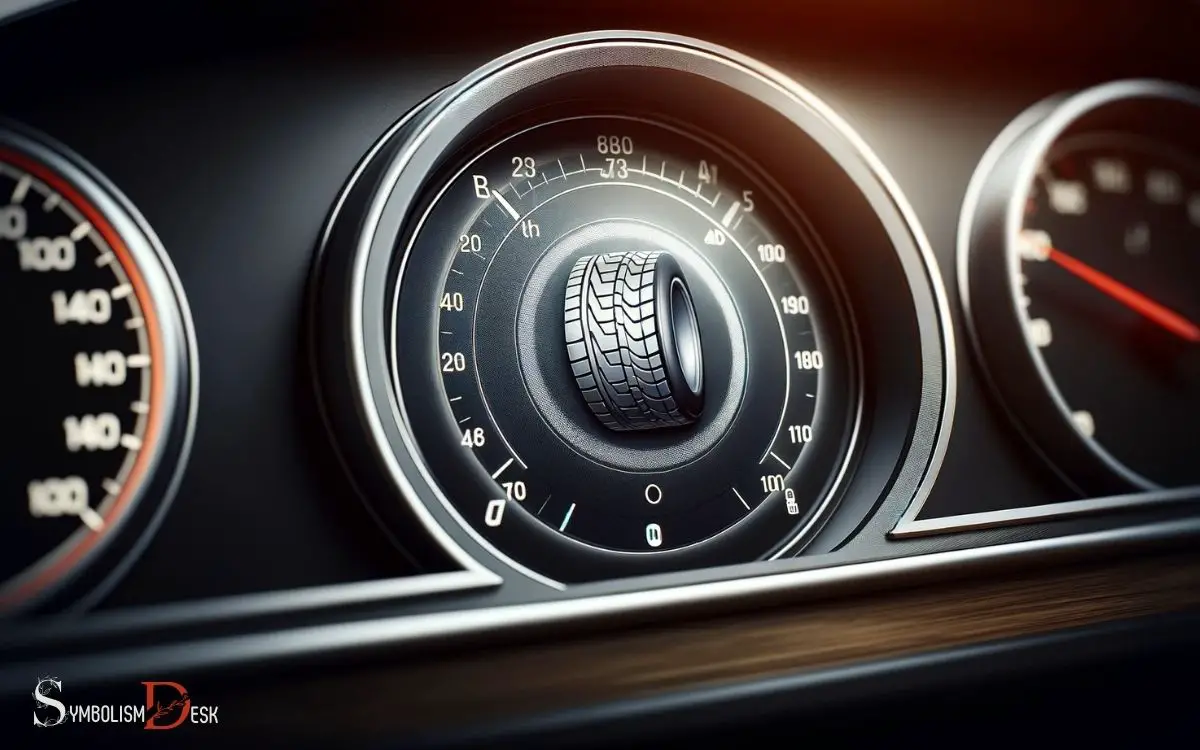
Key Takeaway
Understanding Your Car’s Tire Pressure Warning Light
| Tire Condition | Symbol Indication | Recommended Action |
|---|---|---|
| Tire pressure is too low | Solid illumination of tire pressure symbol | Inflate tires to recommended psi |
| Tire pressure is too high | Solid illumination of tire pressure symbol | Deflate tires to recommended psi |
| TPMS malfunction | Flashing tire pressure symbol | Visit a mechanic to diagnose and fix the issue |
Importance of the Tire Pressure Symbol
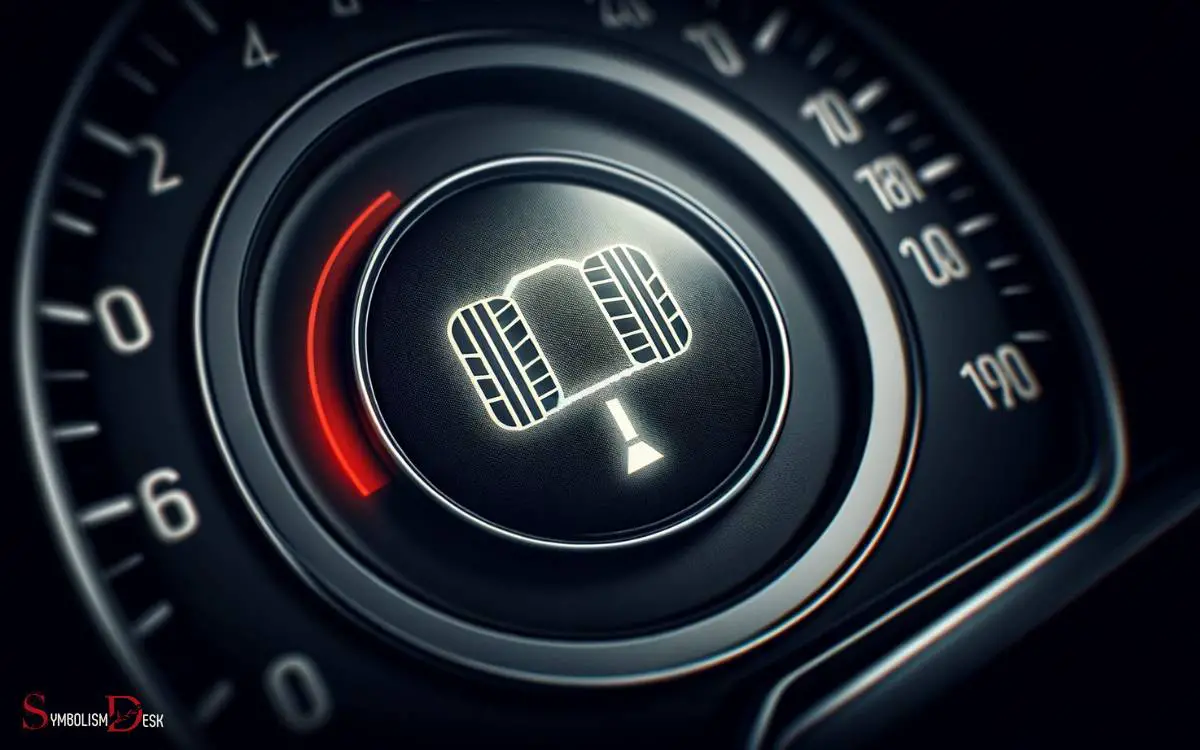
The tire pressure symbol is an essential indicator that warns drivers when the pressure in their tires is either too low or too high.
This warning is crucial because driving with improperly inflated tires can lead to decreased fuel efficiency, compromised handling, and increased risk of accidents. When the tire pressure is too low, the tires can overheat and wear out more quickly.
On the other hand, overinflated tires can lead to a bumpy ride and reduced traction. Therefore, the tire pressure symbol serves as a proactive measure to ensure optimal tire performance, vehicle safety, and fuel economy.
By paying attention to this warning and promptly addressing any tire pressure issues, drivers can maintain their vehicle’s performance and safety on the road.
Understanding the Tire Pressure Monitoring System
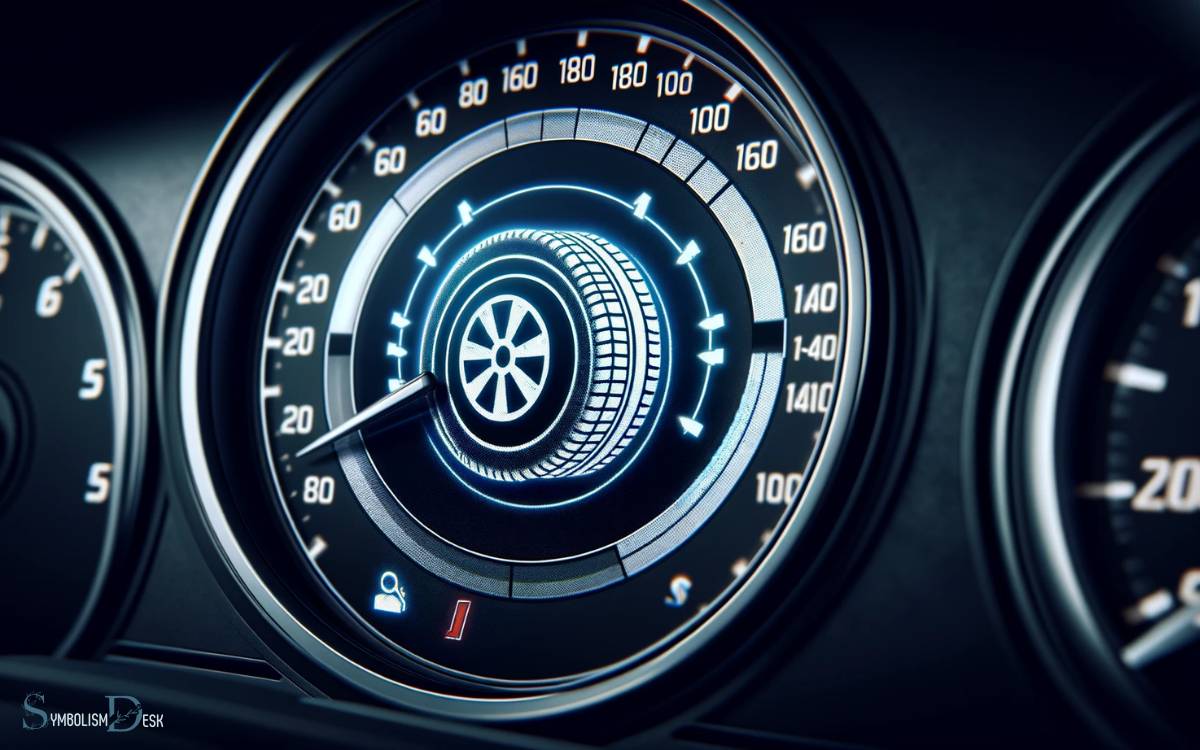
An important aspect to understand about the tire pressure monitoring system is how it actively detects and alerts drivers of any deviations in tire pressure.
The system utilizes sensors in each tire to measure the air pressure and send the data to the car’s onboard computer.
If the pressure in any tire falls below or rises above the recommended level, the system triggers a warning light on the dashboard, alerting the driver to check the affected tire. Some advanced systems even display the specific pressure of each tire in real-time.
Understanding the tire pressure monitoring system is crucial for maintaining optimal tire performance, fuel efficiency, and overall vehicle safety.
Regularly checking and maintaining proper tire pressure based on the system’s alerts can prevent accidents and extend the lifespan of the tires.
Common Causes of Low Tire Pressure
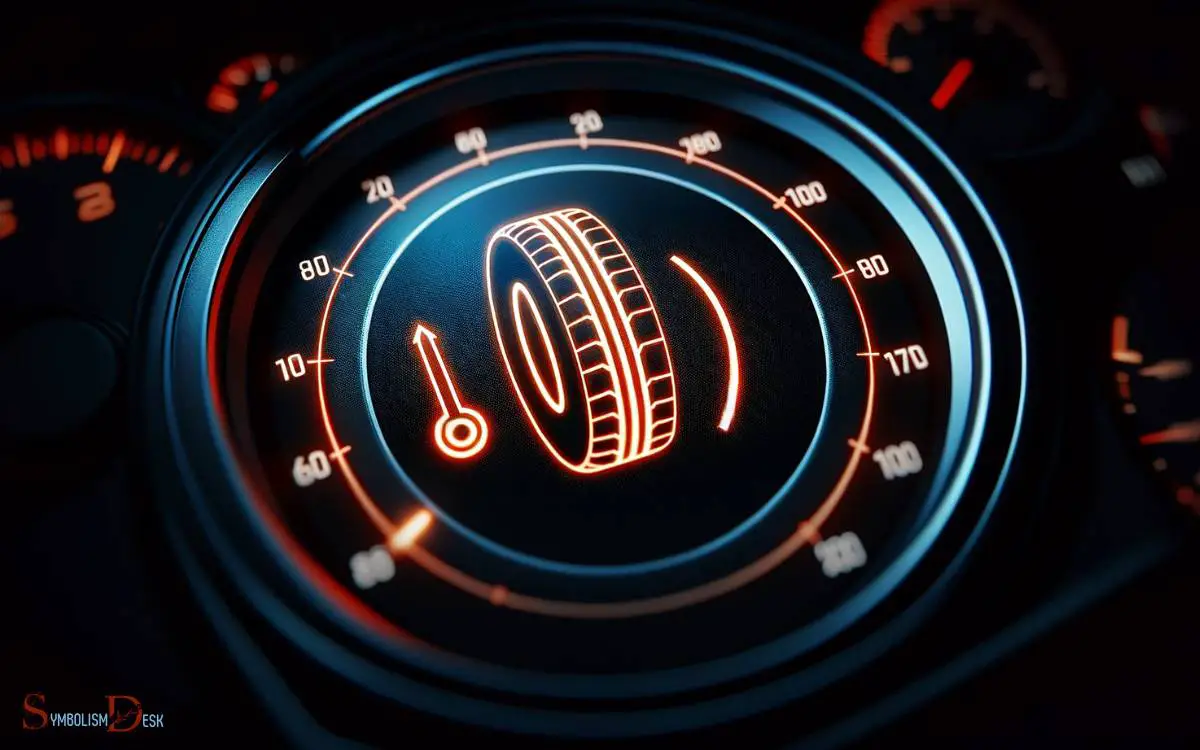
One common cause of low tire pressure is due to gradual air leakage over time. This can happen due to a variety of factors such as punctures, corrosion of the wheel rims, or deterioration of the tire valve.
Understanding these common causes can help car owners prevent and address low tire pressure issues promptly.
The following table outlines some common causes of low tire pressure:
| Cause | Description | Solution |
|---|---|---|
| Punctures | Small holes in the tire from sharp objects or debris | Patching the punctured area or replacing tire |
| Corroded wheel rims | Rust or corrosion on the wheel rims | Sanding and repainting or replacing the rims |
| Deteriorated tire valve | Wear and tear on the valve stem and seal | Replacing the valve stem or the entire valve |
Understanding these causes can help car owners prevent and address low tire pressure issues promptly.
Consequences of Ignoring the Symbol
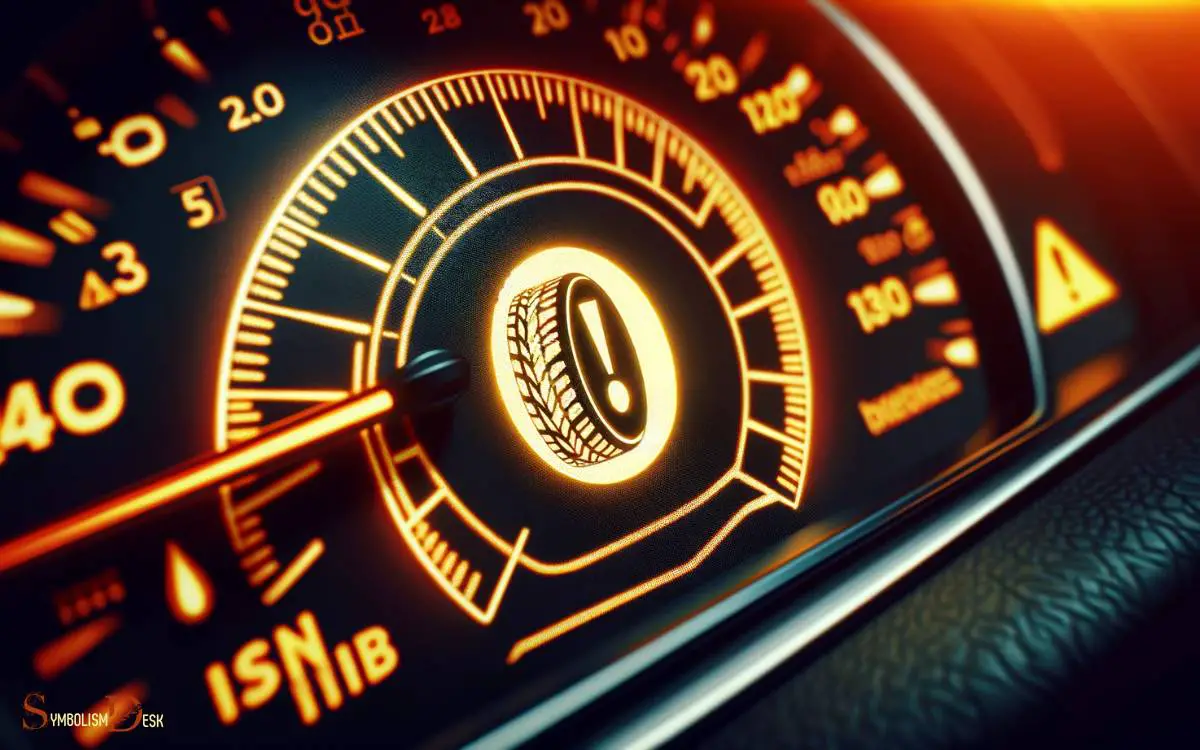
Ignoring the tire pressure symbol in a car can lead to safety hazards and potential damage to the vehicle. When tires are underinflated, it can result in decreased vehicle handling, longer braking distances, and an increased risk of hydroplaning in wet conditions.
Moreover, low tire pressure causes tires to wear out faster and unevenly, reducing their lifespan. This can lead to increased fuel consumption due to added rolling resistance, ultimately impacting the vehicle’s overall efficiency.
Ignoring the tire pressure alert also poses a risk of tire blowouts, which can be particularly dangerous at high speeds.
Additionally, prolonged driving with low tire pressure can cause damage to the tire itself and the wheel assembly. Therefore, it is crucial to address the tire pressure alert promptly to avoid these adverse consequences.
Responding to the Tire Pressure Alert
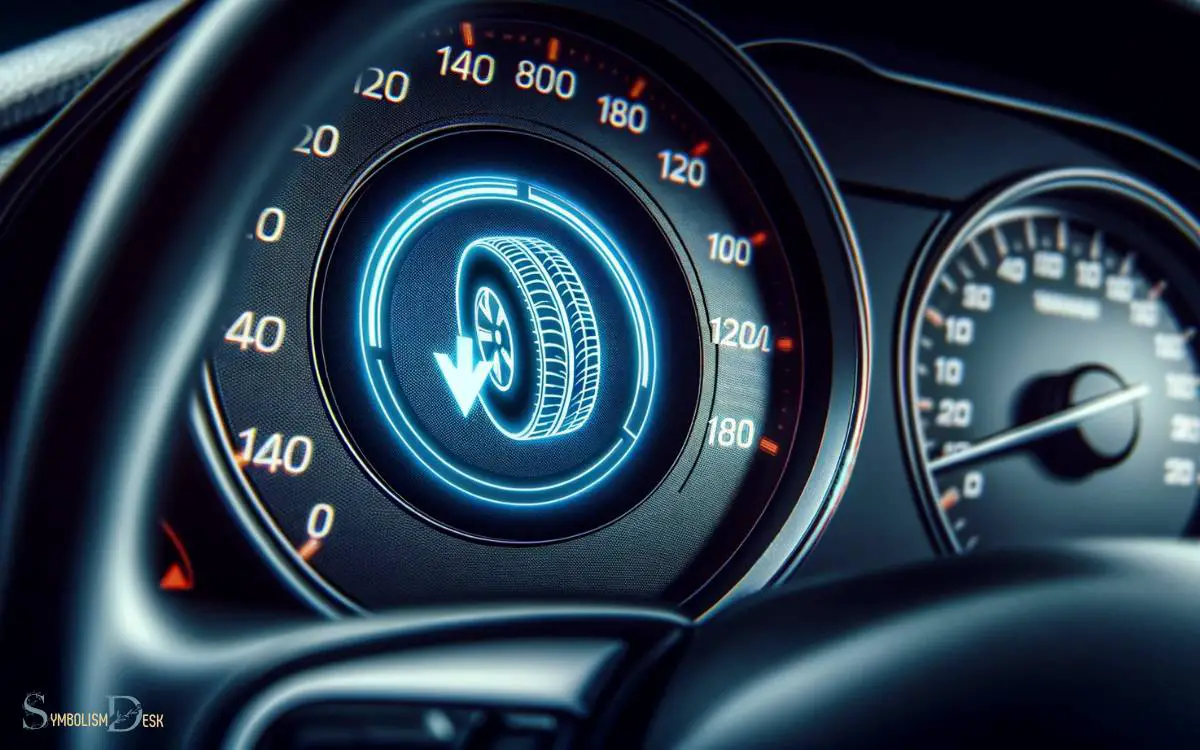
Upon receiving the tire pressure alert, drivers should promptly check and adjust the tire pressure to ensure safe and efficient vehicle operation.
- Park the vehicle in a safe location and use a tire pressure gauge to measure the pressure in each tire.
- Refer to the vehicle’s manual or the sticker inside the driver’s side door for the recommended tire pressure.
- If the tire pressure is low, use an air compressor to inflate the tires to the recommended pressure.
Ignoring the tire pressure alert can lead to reduced fuel efficiency, uneven tire wear, and compromised vehicle handling.
By promptly responding to the alert and maintaining the correct tire pressure, drivers can ensure a safer and more efficient driving experience.
Maintaining Optimal Tire Pressure
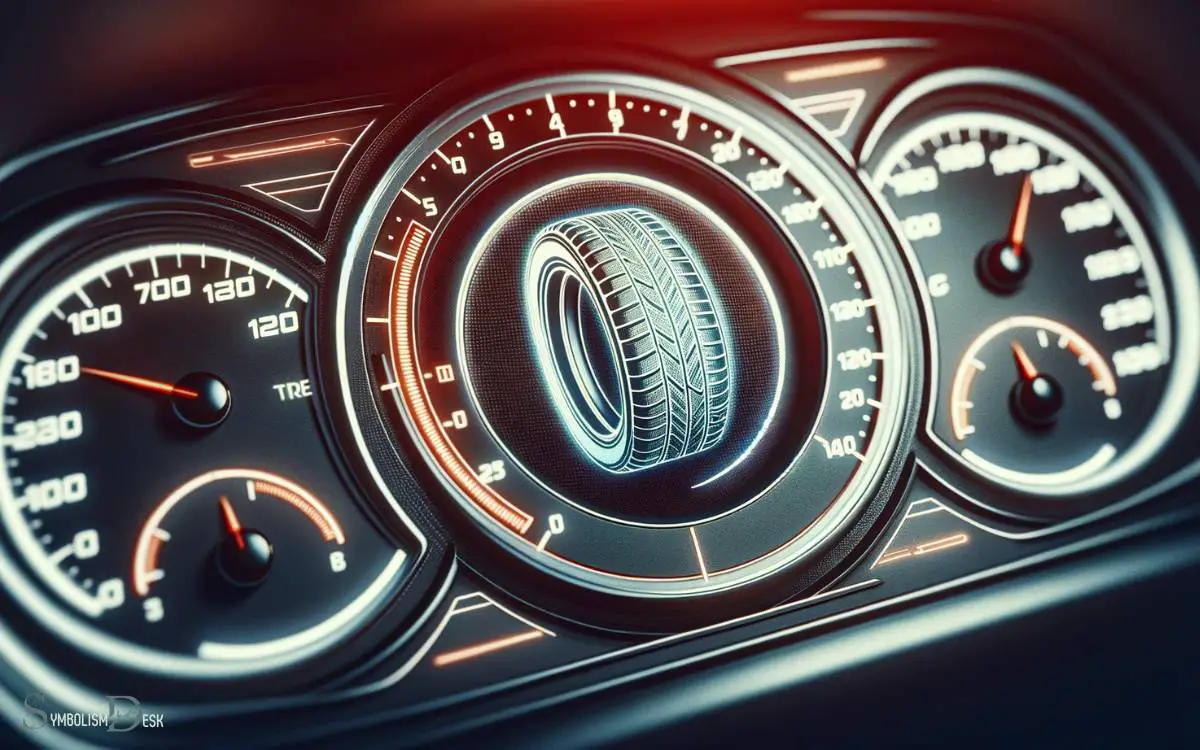
To maintain optimal tire pressure, regularly check and adjust the tire pressure according to the vehicle manufacturer’s recommendations.
Proper tire pressure is crucial for safety, fuel efficiency, and overall vehicle performance. Use a tire pressure gauge to measure the pressure when the tires are cold, as driving heats up the tires and increases the pressure readings.
Compare the measured pressure to the recommended pressure in the vehicle manual or on the sticker located on the driver’s side door jamb or inside the fuel door. Add or release air as needed to meet the recommended pressure levels.
It’s important to perform these checks at least once a month and before long trips. Additionally, ensure the spare tire is also properly inflated and in good condition for emergencies.
Ensuring Safety and Performance
Maintaining proper tire pressure is crucial for ensuring safety and performance on the road. Properly inflated tires contribute to optimal handling, braking, and fuel efficiency. Regularly checking tire pressure is essential to prevent uneven wear and potential blowouts.
Importance of Proper Inflation
Proper inflation of tires is crucial for ensuring safety and performance in a vehicle.
Maintaining the correct tire pressure offers several benefits:
- Safety: Properly inflated tires provide better handling, steering, and braking capabilities, reducing the risk of accidents.
- Fuel Efficiency: Correct tire pressure reduces rolling resistance, improving fuel efficiency and saving money.
- Tire Longevity: Over or under-inflated tires wear out unevenly, leading to premature tire replacement. Proper inflation ensures even tread wear, extending tire life.
Checking Tire Pressure
One should regularly check their tire pressure to ensure safety and performance. Proper tire pressure is crucial for safe handling, fuel efficiency, and tire longevity.
To check tire pressure, start by locating the recommended pressure for your vehicle, usually found on a sticker inside the driver’s door jamb or in the owner’s manual.
Use a reliable tire pressure gauge to measure the pressure when the tires are cold, as driving heats up the tires and increases pressure, leading to inaccurate readings.
If the pressure is low, add air until it reaches the recommended level. Conversely, if it’s too high, release some air. It’s important to check tire pressure at least once a month and before long trips, ensuring that the tires are properly inflated for optimal safety and performance.
Flat Tire Symbol in Car
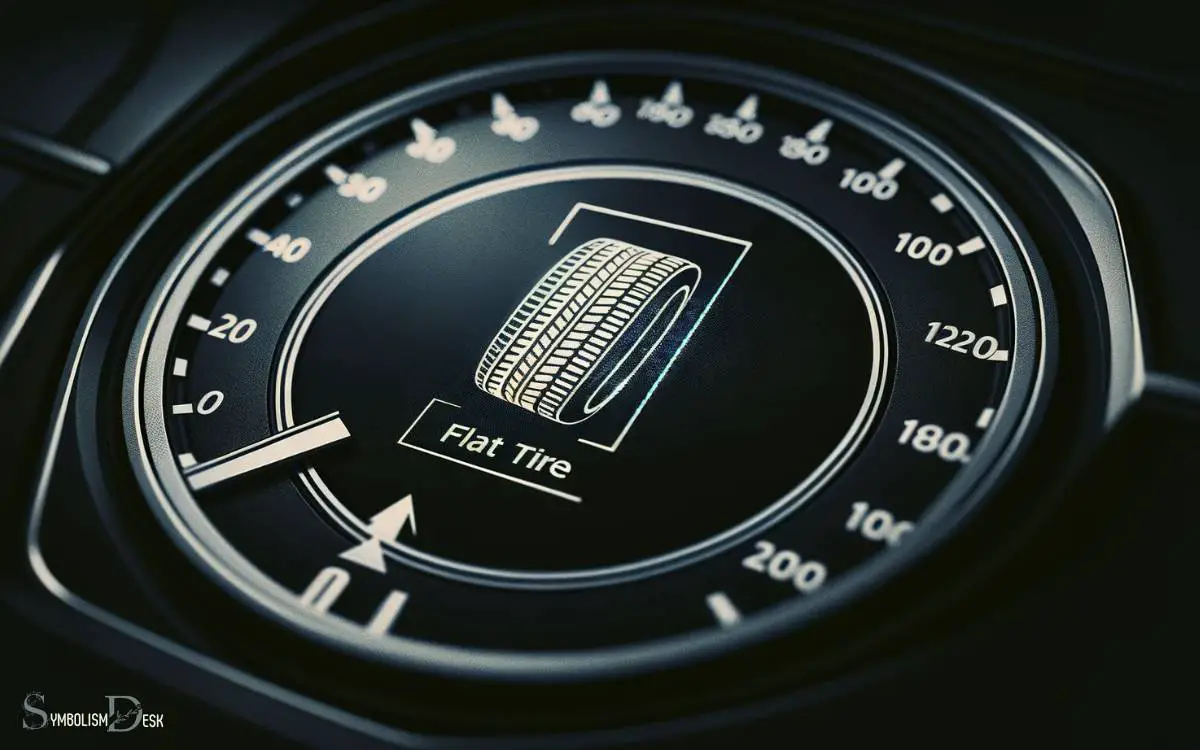
The flat tire symbol in a car’s dashboard typically indicates that there is an issue with one or more of your vehicle’s tires.
This warning light can vary in appearance depending on the make and model of your car, but it usually resembles a tire with an exclamation point inside it or a simple flat tire icon. When the flat tire symbol illuminates, it is important to take action promptly.
Here are the common reasons why the flat tire symbol might come on:
- Low Tire Pressure: The most common reason for the flat tire warning light is that one or more of your tires has low air pressure. Driving with underinflated tires can be dangerous and can lead to reduced handling, decreased fuel efficiency, and increased risk of a blowout.
- Flat Tire: If you have a flat tire or a tire that is rapidly losing air, the symbol will also come on. In this case, you should pull over to a safe location and either change the tire yourself or call for roadside assistance.
- Tire Pressure Monitoring System (TPMS) Malfunction: Modern cars are equipped with a TPMS that monitors tire pressure and alerts you when there is a problem. If the TPMS itself is malfunctioning, it can trigger the flat tire warning light.
To address the flat tire symbol:
Check Tire Pressure: First, you should check the tire pressure in all of your tires, including the spare, and inflate them to the recommended levels if necessary.
You can find the recommended tire pressure in your vehicle’s owner’s manual or on a sticker typically located on the driver’s side door jamb.
Inspect Tires: Physically inspect your tires for any visible damage, such as nails or cuts in the tread, that may be causing a slow leak or a flat tire. If you find any damage, you may need to replace or repair the affected tire.
Reset TPMS: If your tire pressure is correct, and there are no visible tire issues, you may need to reset the TPMS system to clear the warning light. This process varies from one vehicle to another, so consult your owner’s manual for instructions on how to reset the TPMS.
If you’re unsure about the cause of the flat tire symbol or if you cannot resolve the issue yourself, it’s a good idea to have your vehicle inspected by a professional mechanic or take it to a service center to diagnose and repair the problem.
Conclusion
Maintaining the optimal tire pressure in your car is crucial for safety and performance. Ignoring the tire pressure symbol can lead to serious consequences, but understanding and responding to the alert can help prevent potential issues.
By staying informed and proactive, drivers can ensure their vehicle is operating at its best. So, next time the tire pressure symbol lights up, remember the importance of taking prompt action to keep your car running smoothly.





